At the start of the World Series, we talked about how Isaac Haxton won the long-awaited first bracelet. In heads-up, he defeated the British high-stakes Spin & Go regular Ryan O'Donnell. O'Donnell entered the final table with the seventh stack, and his run was overshadowed in our review. O'Donnell commented on the key hand, in which he had to make his hardest call against Poker Hall of Fame candidate Brian Rast, on his YouTube channel.
Hello from Vegas! I'm going to tell you about the most important hand of my life, played at the WSOP in the $25k High Roller, where I finished in 2nd place behind the great Isaac Haxton. The hand in question took place early in the final table. The opponent put a lot of pressure on me and I had to make a very uncomfortable call.
It started with Brian Rast opening hijack+1 to 320,000 (blinds 80,000/160,000, BB ante 160,000) with two eights.
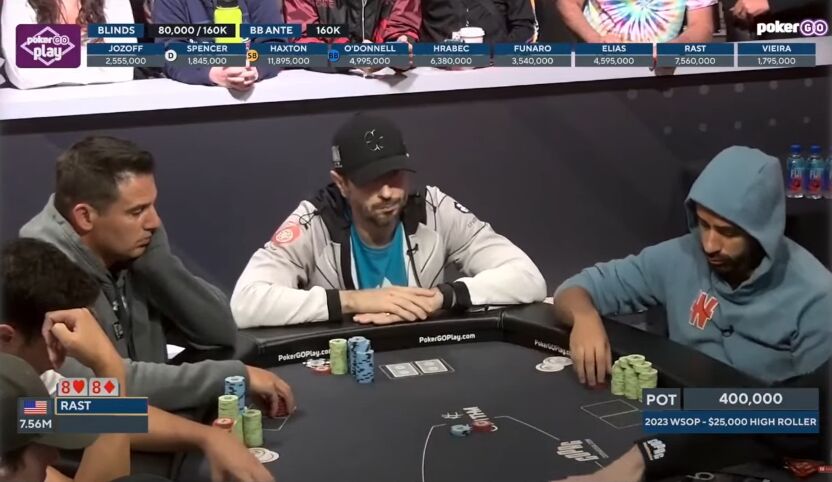
This is a high enough pair to raise, and with his stack – he was second in chips at the time and was in position on the chip leader – you can open from sixes and up. His raising range should also include 98s, T9s, and increasingly strong hands.
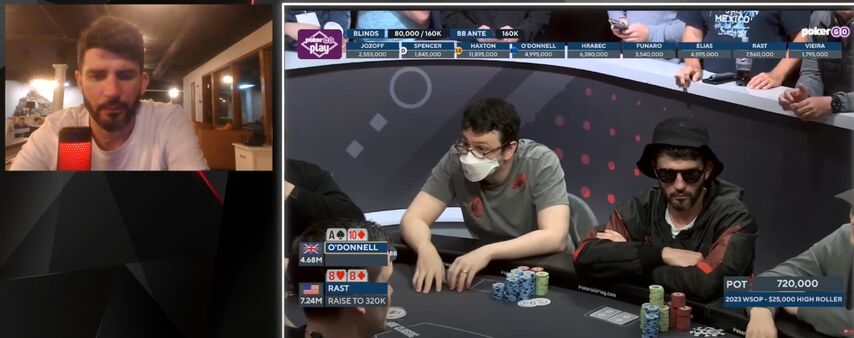
Everyone folds before me. In the big blind I have off. Obviously, the opponent will put pressure on me, taking advantage of the fact that according to ICM I have to play carefully, but with the strongest hands I still need to defend the blind. Call looks like the right decision.
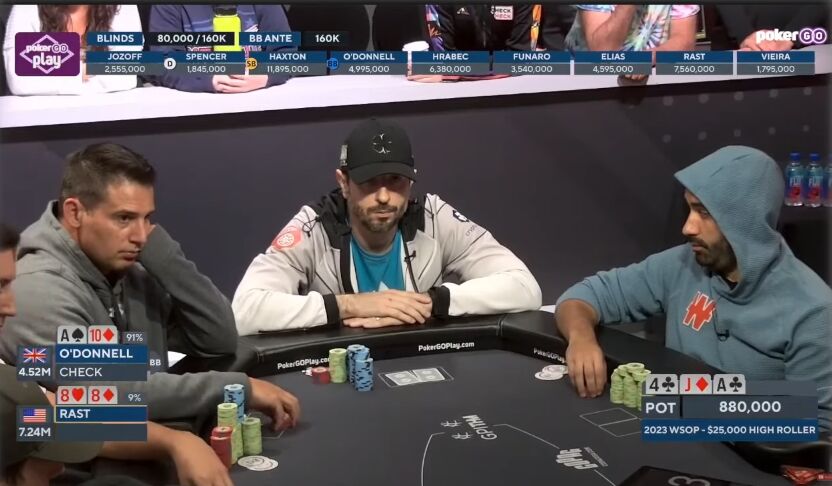
On the flop with an ace, I have two options – check-call and check-raise, depending on the circumstances. In this case, as I said, the opponent is in a better ICM position and will often try to bluff me. On this texture, an old-school reg like Brian Rast will always play his bluffs as aggressively as possible. My range is almost impossible to resist. Especially if I 3bet with , I almost never even have two pair, but there are a huge number of combinations like jack + flush draw, jack + backdoor draw with one club and Broadway, as well as any gutshots. All of these hands will not give up on one bet, but will drop several barrels.
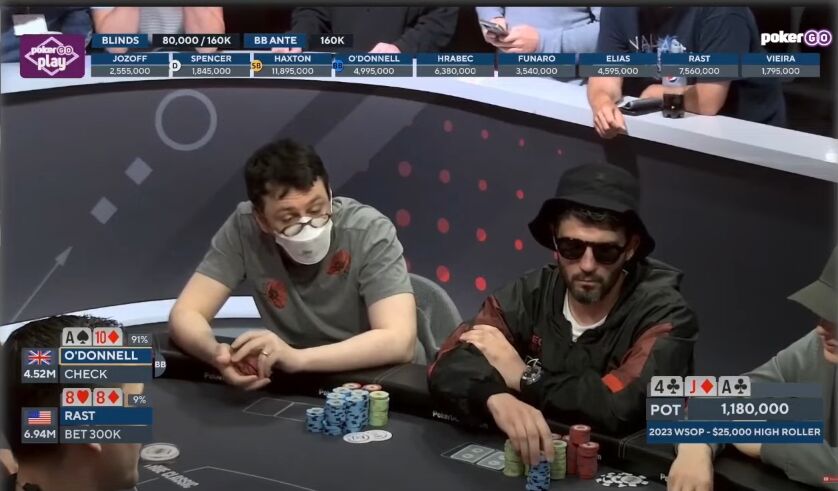
Rast bets 300,000 and I call.
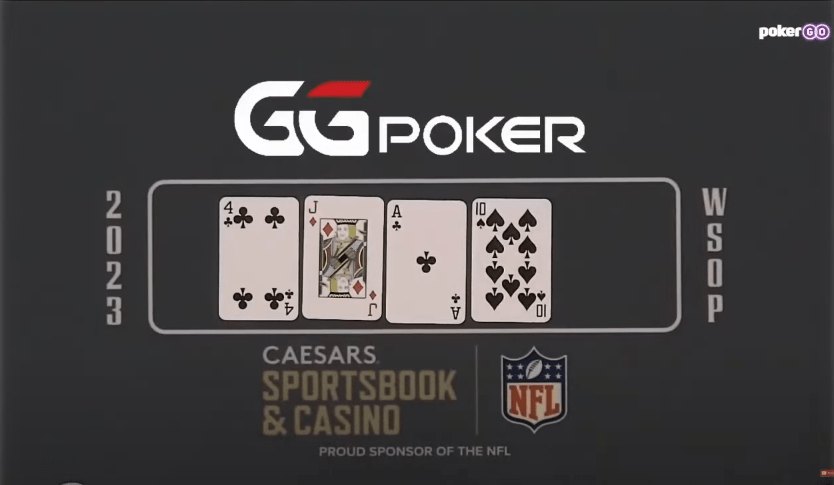
On the turn, of course, I'm worried about , because I do not block this combination at all. But I block quite a lot of other hands – sets of aces and tens, , , – with which he will gain as hard as possible.
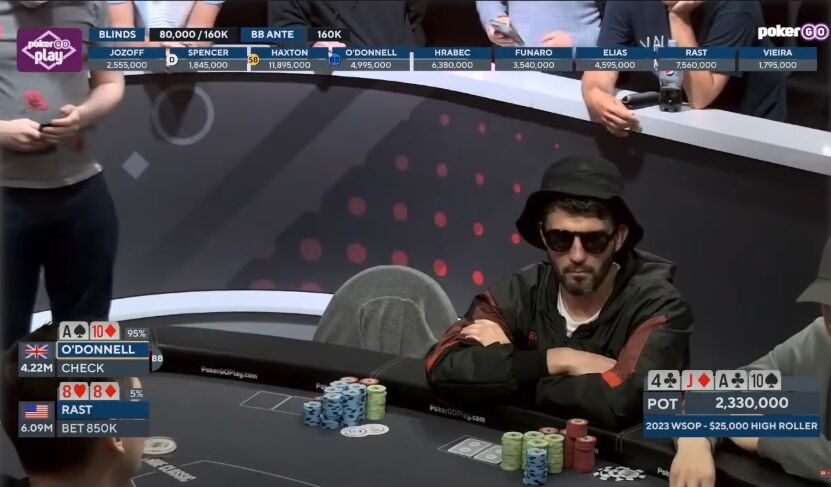
When I check and Brian fires a second barrel, I have an all-in opportunity and I seriously consider it. However, it seems to me that in the current dynamics, an old-school reg like Brian Rast will bet three barrels with absolutely all his bluffs, and I block his value quite strongly. So I decided to call again. I have a great bluff catcher on any river!
Any river? How about this?
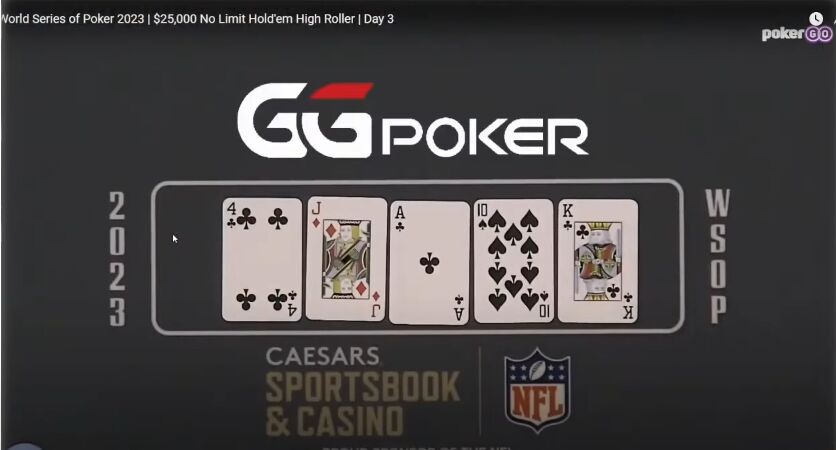
The king of clubs is a killer card for me, which amplifies a large part of my opponent's bluffing range. My first thought is that bluffs on the river won't be enough, and I won't be able to call.
However, let's count. In my opinion, in his range of three barrels, there will be , , , . He will also turn some pairs into bluffs, for example, maybe even . Due to the very favorable dynamics for the big stack, there will be a lot more bluffs in Rast's range than in normal conditions. He may well beat me or even two pairs – it almost happened!
I check and he makes a huge bet of 2,500,000
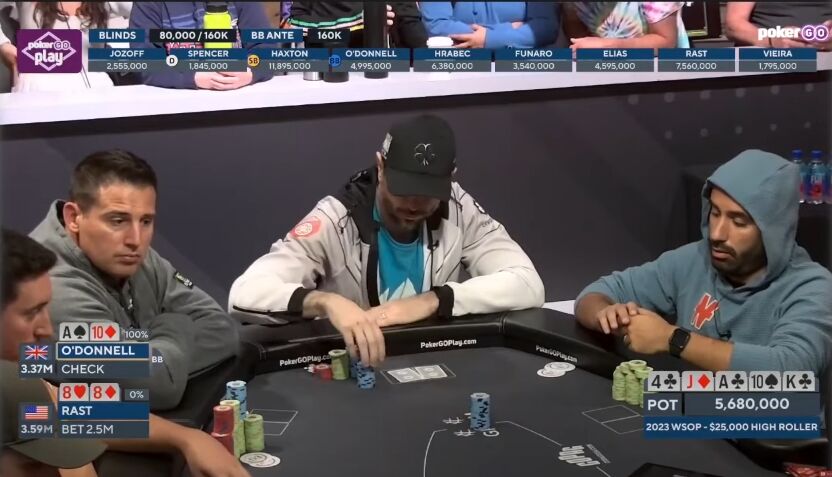
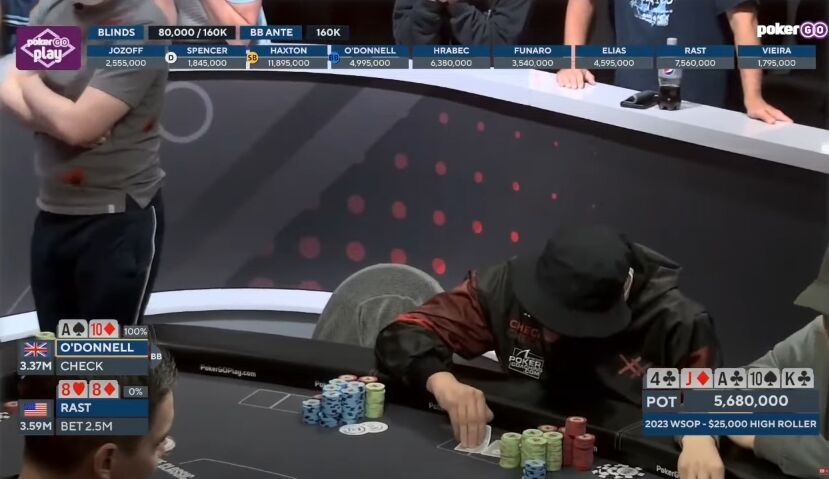
A little background about sizing. The day before, when we were at the same table, he saw me fold to this size on the river in a similar situation and call my hand to one of the fans. It was discussed at the table, he could not help but pay attention. So I assumed this sizing was a little more about fold equity rather than draw. Of course, this consideration alone is clearly not enough to make such an expensive call.
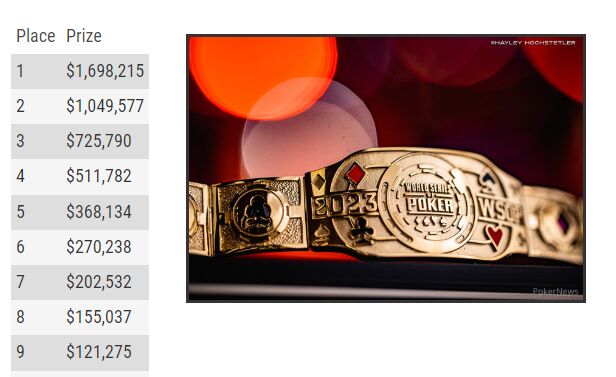
I began to think about what he was portraying. These are, firstly, flushes, secondly, straights, but first of all, flushes. Let's talk about them. First, he can't have an ace or king flush, since the ace of clubs and king are on the board. Will he always barrel the turn with and ? Don't think so. ? Yes, most likely, although there is no absolute guarantee, maybe he will want to check with some value, I don't know his strategy. almost unbelievable due to the fairly tight preflop position. Finally, will always play this line. This is the most dangerous hand for me. worth discounting because he will check them on the turn.
How wide does he open unsuited? I think he will fold QJo quite often, but not always – let's leave it with a small frequency. KQo – all combos are in the range, but I'm not sure that he will want to gain with increased sizing. And, of course, he could have too, except for the combinations that my ace of spades blocks.
As a result, it turns out that there are not so many combinations of value in the bottom line. But bluffs ... As I said, all pairs are below ten, – in my opinion, one of the best hands to barrel on the turn and river, and K9s. All.
If you count the combinations, he has more bluffs than value. Therefore, I was obliged to make this call. The opponent's sizing also helped a little – I discounted some hands weaker than a flush to him, but bluffs are just interested in a big and tough bet.
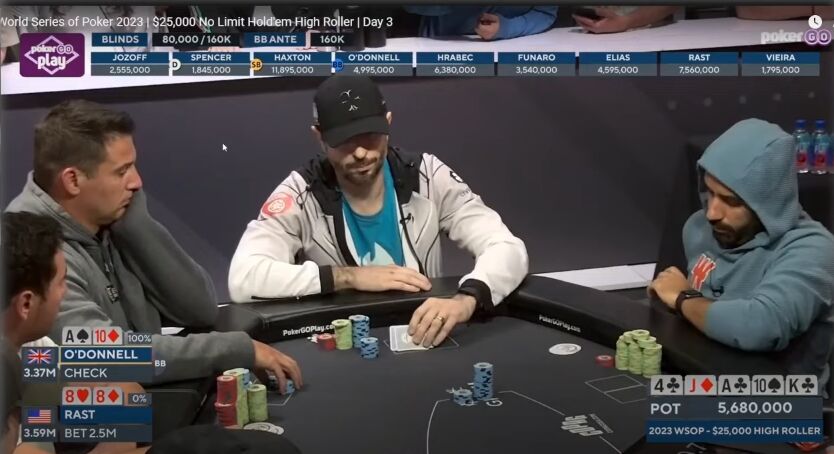
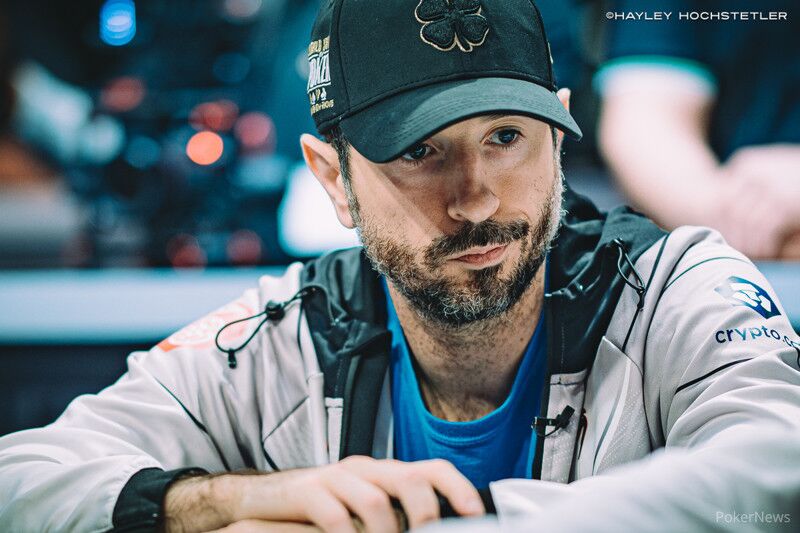
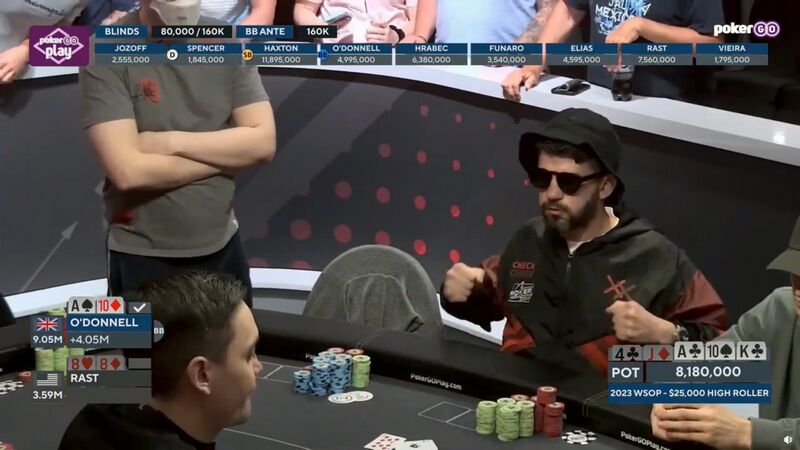
The call put me second in chips (I had 8,840,000, Brian Rast had 3,640,000) which ultimately propelled me to second place in the tournament.
It was a great tournament and I enjoyed the game a lot. I think that I will release another video about him, in which I will tell you about other interesting episodes of the game.

